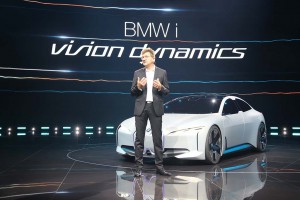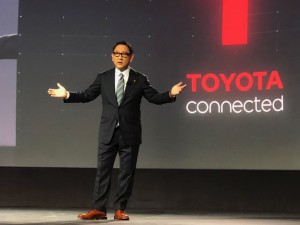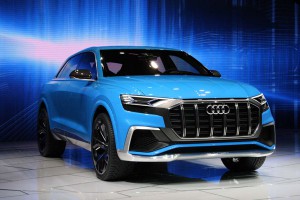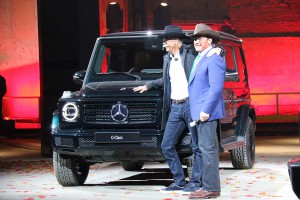Already hit by key defections, the organizers of the North American International Auto Show in Detroit learned Thursday that Audi will also be a no-show in January 2019 – though the luxury arm of Volkswagen Group said it will “continue to evaluate” a return at a later date.
A once-regional event, the NAIAS became the most significant auto show in the U.S., and one of the world’s most widely watched, when it added the “International” designation in 1989. At its peak around the start of the new millennium, Detroit could count on virtually every manufacturer to participate, with some years seeing more than 70 new cars, trucks, concepts and crossovers debut.
As the industry plunged into recession, things began to change. Some manufacturers, such as Nissan, pulled out temporarily, but others decided to abandon the Motor City event entirely. That included some of the most exclusive marques, like Ferrari, as well as mainstream and luxury brands like Mazda, which was a hold out this past January. Volvo had no corporate presence, though its local dealers did roll a few vehicles into Detroit’s Cobo Hall convention center. Now, it seems, the exodus is turning into a rout. Audi follows Mercedes-Benz, BMW and Porsche in planning to stay home next January.
“Audi has had a long and successful history at NAIAS, debuting countless models that Audi customers enjoy today,” the automaker said in a statement announcing its decision. “For 2019, we have decided that we will not participate in NAIAS. We will continue to evaluate Auto Shows on a case by case basis relative to the timing of our product introductions and the value the show brings from a media and consumer perspective.”
The news comes as a troubling development for the Detroit Auto Dealers Association, which sponsors the annual NAIAS. At its peak, the show’s media preview was claimed to draw more than 5,000 journalists from around the world for unveilings stretched over three days or more. This past January the calendar stretched from Sunday to Tuesday, however, there was really only one day of previews by automakers that ended by early Monday afternoon. The rest of the schedule was filled with conferences by automotive suppliers and technology firms.
And where organizers once begged for more space to squeeze in participants, they have not only abandoned the lower level of Cobo but this year struggled to use the rest of the sprawling facility.
Detroit, as the site of a major auto show, has challenges that “are finally catching up with it,” said a senior executive of an Asian brand who said that he is also lobbying to pull out from the NAIAS. To start with, it takes place in January, perhaps the worst month in a long cold winter. Meanwhile, Detroit remains a primarily Big Three consumer market thanks to the special deals offered to the employees, friends and family members that make up a good portion of the Motor City population.
(Mercedes-Benz dropping out of 2019 NAIAS. Click Here to find out why.)
To be fair to the NAIAS, it is by no means the only major auto show struggling to redefine itself. Chicago was, through the late 1980s, home to the biggest auto show in the country from a media perspective, but it had even fewer previews this year than Detroit. The Los Angeles Auto Show struggled last November. Only the New York International Auto Show, which ran from late March into early April, showed some life from a news front, according to industry observers.

BMW may be joining the exodus from Detroit, but it's also planning a major cutback in 2019 in Frankfurt.
Major auto shows like these typically serve two purposes: first, providing a backdrop for manufacturers to reveal products, and then a place for those companies to reach out to potential buyers with a place to actual compare and contrast all the available offerings.
But auto shows are turning into “dinosaurs,” contends Mike Jackson, the CEO of AutoNation, the country’s largest automotive retail chain. And he’s not alone in that view.
The cost of simply setting up a booth for a show like Detroit runs into the millions of dollars. And it runs even higher to stage a news conference. So, carmakers are starting to eye alternatives. These can include non-traditional events like the annual Consumer Electronics Show in Las Vegas each January, the Texas State Fair or the Pebble Beach Concours d’Elegance in August. Some automakers are staging their own, one-brand shows. And others are using on-line “reveals,” as Rolls-Royce did this week to unveil its new Cullinan SUV.
Despite the recent spate of bad news, Detroit organizers say they are developing plans aimed at rebuilding the NAIAS. “Plans are well underway to revolutionize our show and provide participating companies a global stage that delivers cost-effective opportunities to audiences that only Detroit can offer,” spokesman Max Muncey said in a statement.
One possible move would shift the event to October, or perhaps even June, times when the revival of the Motor City would be best displayed. But each of those dates creates other potential problems. If the show moves to autumn it would come right after the alternating events in Frankfurt and Paris, which might make European manufacturers like BMW reluctant to return.
(Click Here to see why Detroit’s NAIAS may be moving to October.)

As technology becomes more central to the business, automakers like Toyota - CEO Akio Toyoda shown here - are shifting to non-traditional events like CES.
If there’s any consolation, those two events may also be running into big trouble.
When BMW announced its own pull-out from Detroit earlier this year it said, “This decision was made as BMW Group is constantly examining our presence at trade-shows and other engagements, while, at the same time, also exploring alternative platforms and formats.” Indeed, BMW is planning to slash as much as 75% of its 2019 auto show budget, the German business publication Handelsblatt revealed late last month. At the Frankfurt Motor Show, where BMW had previously gone so far as constructing an indoor driving track, it will have just a 10,000 square foot display at the next event down from 36,000 in 2017.
Auto shows have been a fixture of the auto industry for more than a century. But, like the auto industry itself, they are facing a time of major transformation. They will either have to find ways to adapt or they could wither up and vanish.
(For more on BMW’s new auto show strategy, Click Here.)



Even though I attend every year, the show is pretty much a bore. With the push to SUVs, most vehicles look the same, “Hey Fred, look at that box. The tail lights are a lot nicer than last year’s”